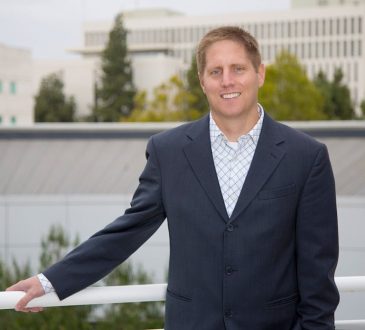There Are 7 Potential CEOs in Your Organization. Are You One of Them?

I still remember the moment vividly: I was sitting at a table during a sold-out conference, scanning the articles sent in advance. One caught my eye & I paused. Did I read that right? It was just a brief mention, but it struck a chord: In any given organization, there are seven potential CEOs.
Those words spoke to me: Who are they, and how do I identify them at my own organization? Once identified, how can I nurture their development, regardless of their level? And more importantly, how can I transform the organization to recognize leadership potential at every level?
That idea has stayed with me, shaping my approach to succession planning and leadership development—and it’s been a game changer to everything from hiring to promotions to career development.
For individuals, this notion serves as a powerful challenge: Are you positioning yourself as one of those seven? For CEOs and CHROs, it’s a wake-up call: Do you know who your seven are? Are you developing them for their potential?
Why This Matters to CEOs and Aspiring Leaders Alike
Succession planning isn’t just about preparing for leadership transitions—it’s about unlocking an organization’s full potential.
- For CEOs and the C-Suite: Without a strong succession planning process in place, overlooking internal leadership talent risks loss of institutional knowledge or client knowledge, disengagement, and overreliance on external hires who may not align with company culture.
- For Individuals: Leadership is not tied to title or hierarchy. It’s about demonstrating readiness, vision, and the ability to inspire and execute. As I would often say to talent: when the opportunity presents itself for a promotion or a leadership experience, will you be ready?
Leadership transitions are inevitable. The question is whether your organization—and you—are prepared when the time comes.
Key Points to Identify and Nurture Potential CEOs
- Leadership Can Come from Anywhere
Leadership isn’t confined to those already in the corner office. It often emerges from unexpected places. Organizations that excel in succession planning create systems to uncover hidden talent.
For CEOs: Implement tools like talent reviews, stretch opportunities, and leadership development programs that identify and develop leaders across levels.
For Individuals: Step up when opportunities arise, even if they feel daunting. Leadership often begins outside your comfort zone.
At one organization with multiple brands, the CEO tasked me with identifying the best talent across all brands and geographies to build a pipeline of future leaders, including the next CEO. Through thoughtful global talent reviews of the top 5 levels in the company during and a dedicated “People Planning Week,” we uncovered the gems that went on to be intentionally developed for future roles. Leaders gained visibility into emerging talent, while employees saw new opportunities across brands. The result? A robust leadership pipeline, movement across brands and geographies, and an engaged workforce. - It’s Not About the Title, It’s About the Traits
Leadership potential is defined by traits, not positions. The qualities that distinguish future CEOs include vision, resilience, adaptability, strategic thinking, prioritizing company goals vs. own goals, and the ability to inspire others.
Studies, such as Jim Collins’ Good to Great and Harvard Business Review research, highlight these traits as essential for leadership success. Organizations must prioritize cultivating them in high-potential employees.
One question by a former CEO for whom I worked that often reframed talent review discussions was this: “Are we valuing results at all costs, or are we prioritizing those who not only deliver results but also leadership skills?” This shift in focus often revealed new names—individuals ready to lead with both competence and character. This also led our performance management to specify that performance ratings were based on both the ‘what’ (results achieved) and the ‘how’ (leadership demonstrated, values upheld). Small changes like this can fundamentally shift culture and leadership: what gets measured, gets done.
- CEOs Must Actively Build Their Bench
Building a leadership bench requires intentional effort—assessing talent, creating development plans, and fostering a culture where emerging leaders thrive.
For CEOs: Pair high-potential employees with other leaders or board members, and assign stretch projects to test their ability to lead under pressure.
For Individuals: Take ownership of your growth. Seek feedback, embrace challenges, and position yourself as indispensable to the organization’s success.
One practice I introduced was hosting intimate dinners with the CEO during their travels. Six carefully selected employees were invited to dine with the CEO, each cohort given a thoughtful question to answer during the dinner (e.g., in this region, one of our main challenges is xyz – if you were me, how would you address it?). These conversations provided a magnifying effect: the CEO gained deeper insights into emerging leaders, and employees were able to contribute ideas in an unfiltered exchange. - Do You Know Your 7?
This is the critical question for CEOs: Do you know who your seven potential CEOs are? And if not, how will you find them?
– Use succession planning tools to assess leadership potential.
– Engage in candid conversations with your leadership team to uncover overlooked talent.
– Pay attention to those who consistently demonstrate curiosity, resilience, and initiative—they are often the ones ready to step into bigger roles.
For individuals, the challenge is equally pressing: Are you making yourself visible as a potential CEO? This means consistently delivering results, taking on stretch assignments, and building relationships across the organization.Tying It All Together: Lessons Learned
This is the critical question for CEOs: Do you know your seven potential CEOs? If not, start here:
– Use succession planning tools to assess leadership potential.
– Engage your leadership team in honest conversations to identify overlooked talent.
– Look for individuals who consistently demonstrate curiosity, resilience, and initiative.
– Use leadership assessments to level the playing field and have objective data on how has the capacity for leadership roles.
For Individuals: Make yourself visible. Consistently deliver results, take on stretch assignments, and build relationships across the organization.
Leadership Transitions are Inevitable, But Chaos Doesn’t Have to Be
Every organization has seven potential CEOs waiting to be discovered and developed. Succession planning is one of the most impactful practices in leadership today. So, are you ready to find—or become—one of the seven?
Ready to Future-Proof Your Leadership Pipeline?
Written by Soni K. Basi, Ph.D.
Have you read?
Countries with the most gold reserves.
World’s Best Public Relations Agencies (Top PR Firms).
Countries with the highest human freedom.
World’s Safest & Most Dangerous Countries For Travelers.
Longest and Shortest Life Expectancies in the World.
Bring the best of the CEOWORLD magazine's global journalism to audiences in the United States and around the world. - Add CEOWORLD magazine to your Google News feed.
Follow CEOWORLD magazine headlines on: Google News, LinkedIn, Twitter, and Facebook.
Copyright 2025 The CEOWORLD magazine. All rights reserved. This material (and any extract from it) must not be copied, redistributed or placed on any website, without CEOWORLD magazine' prior written consent. For media queries, please contact: info@ceoworld.biz











